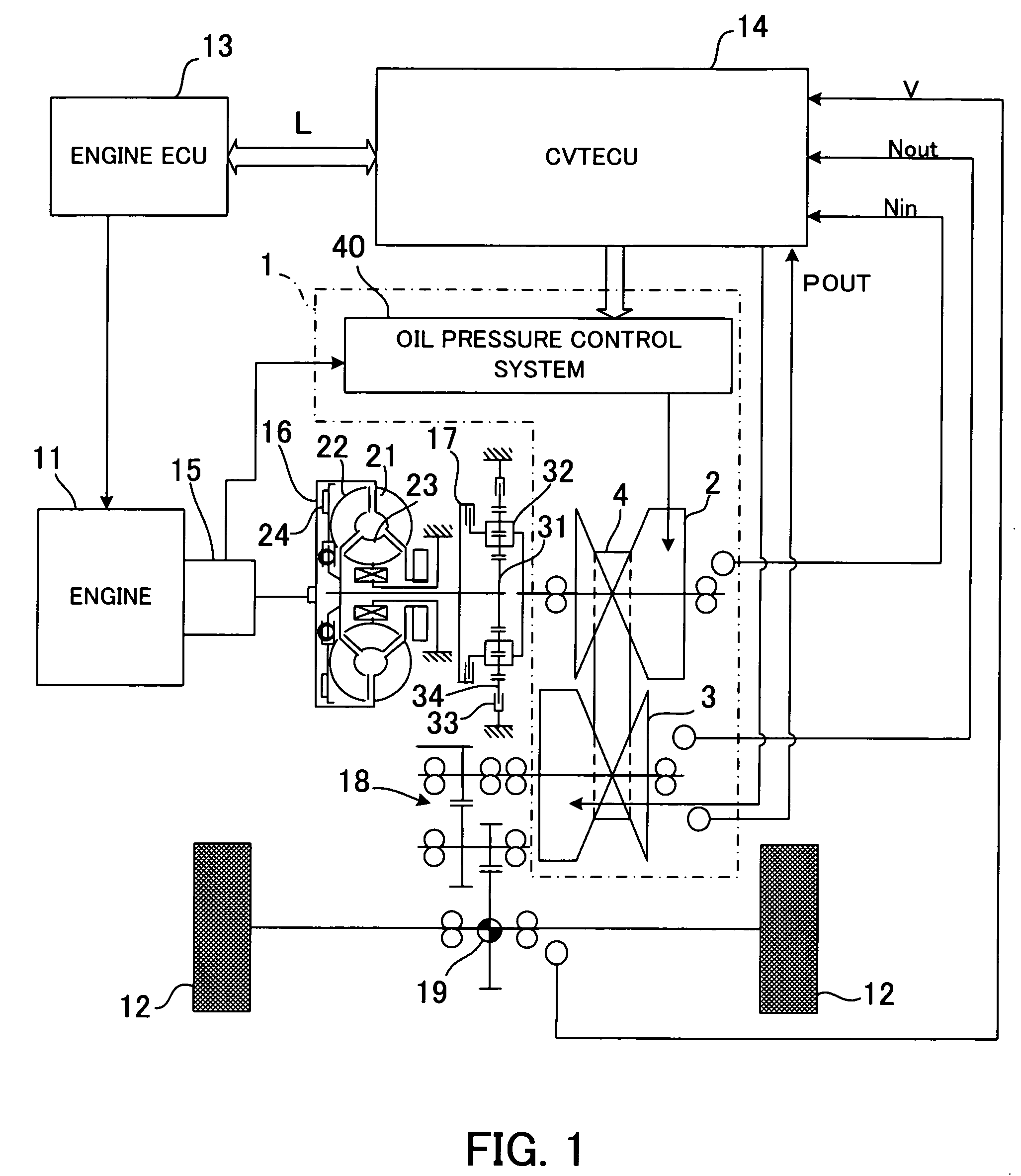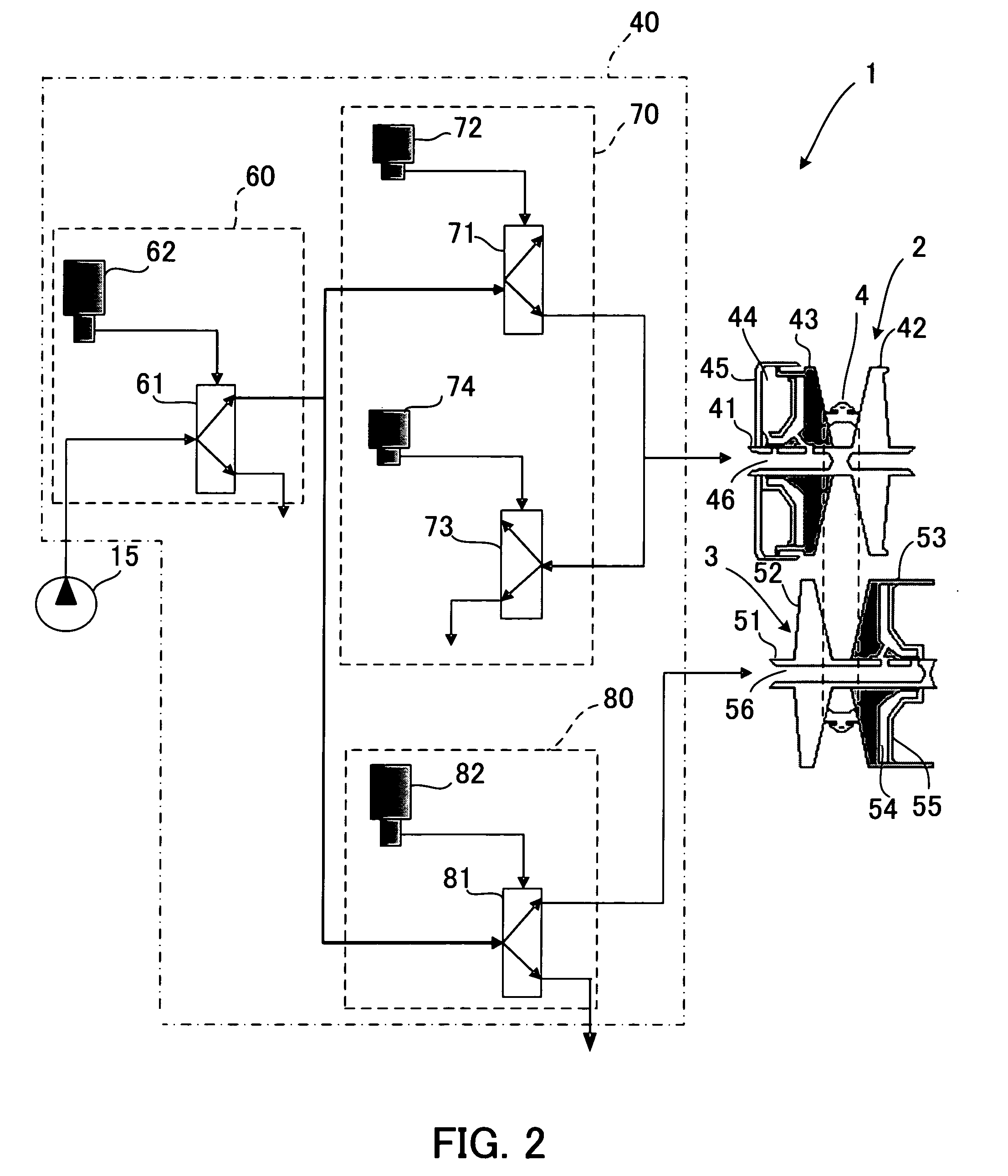Method of controlling continuously variable transmission and control system
a technology of oil pressure control and transmission, applied in the direction of gearing control, gearing element control, belt/chain/gearing, etc., can solve the problems of increasing cost, affecting the accuracy of oil pressure control, and affecting the operation so as to improve the control accuracy of line pressure, ensure the accuracy of oil pressure control, and eliminate the effect of oil pressure control accuracy degradation
- Summary
- Abstract
- Description
- Claims
- Application Information
AI Technical Summary
Benefits of technology
Problems solved by technology
Method used
Image
Examples
Embodiment Construction
[0038] The invention will now be described in detail with reference to drawings showing a preferred embodiment thereof.
[0039] In the present embodiment, a method of controlling a continuously variable transmission according to the present invention is applied to a vehicle control system. FIG. 1 is a diagram showing a system configuration of the vehicle control system including a continuously variable transmission according to the present embodiment.
[0040] In the vehicle control system, a continuously variable transmission 1 of a belt type is disposed between an engine 11, which is a drive source of a vehicle, and drive wheels 12, and controlled objects are controlled by respective electronic control units (hereinafter simply referred to as “the ECUs”). More specifically, engine control is performed by an ECU 13 provided for the engine (hereinafter referred to as “the engine ECU 13”), and transmission control, described hereinafter, is performed by an ECU 14 provided for the contin...
PUM
 Login to View More
Login to View More Abstract
Description
Claims
Application Information
 Login to View More
Login to View More - R&D
- Intellectual Property
- Life Sciences
- Materials
- Tech Scout
- Unparalleled Data Quality
- Higher Quality Content
- 60% Fewer Hallucinations
Browse by: Latest US Patents, China's latest patents, Technical Efficacy Thesaurus, Application Domain, Technology Topic, Popular Technical Reports.
© 2025 PatSnap. All rights reserved.Legal|Privacy policy|Modern Slavery Act Transparency Statement|Sitemap|About US| Contact US: help@patsnap.com



